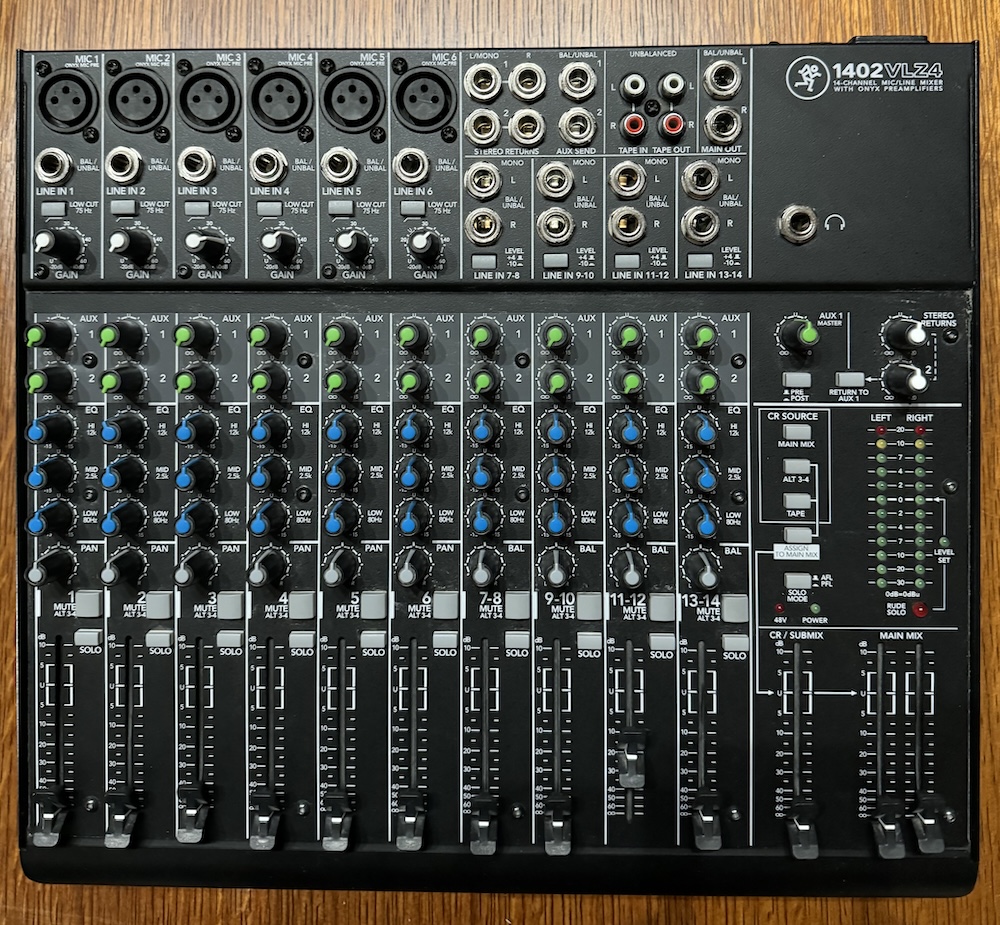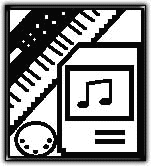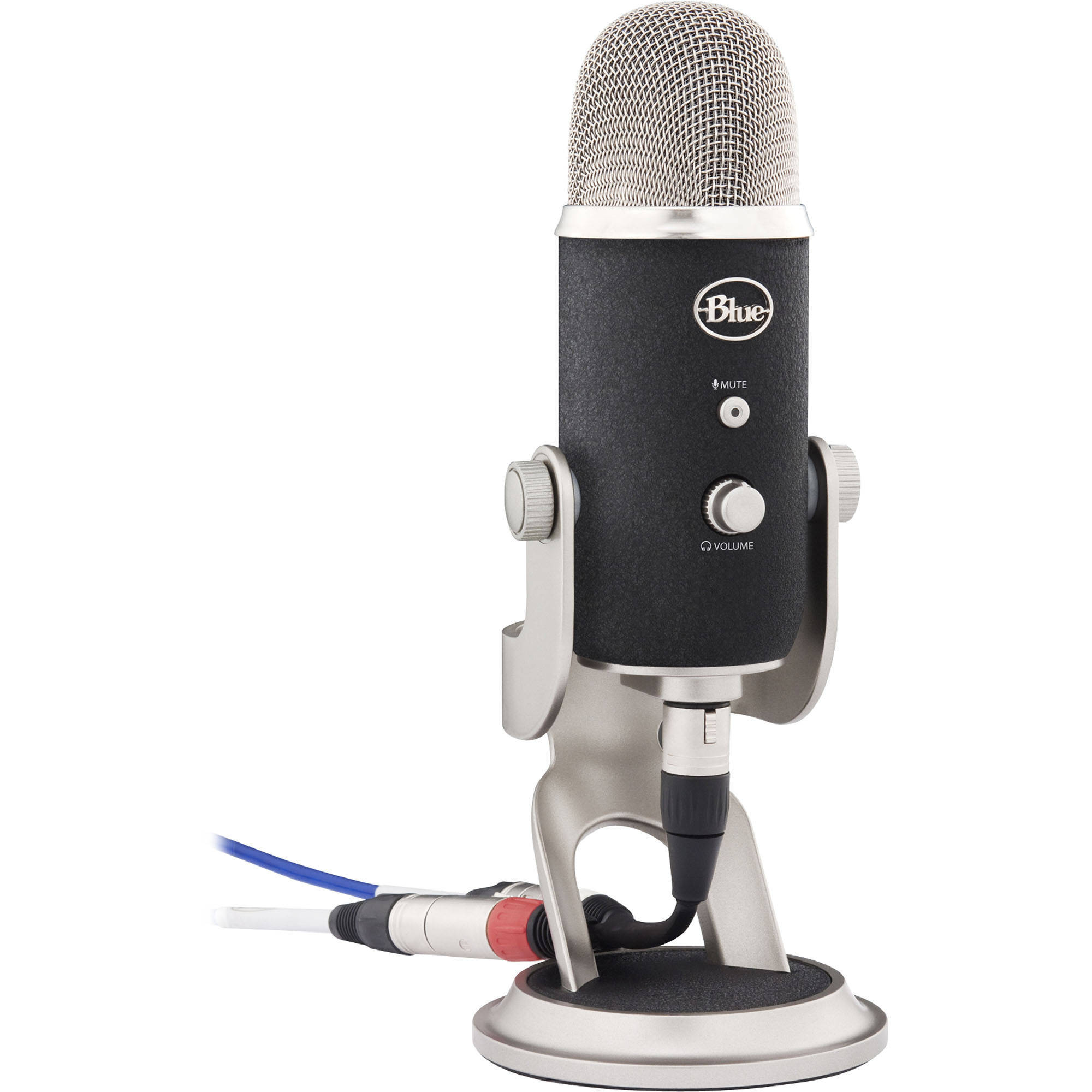Manufacturers
Categories
- Audio Recording Hardware - (306)
- Bargain Basement - (91)
- Computers - (5)
- DJ Hardware and Software - (20)
- EMB Book Shop - (187)
- -Instructional - (80)
- -Interesting Reading - (45)
- -Sheet Music & Music Books - (9)
- -Video/DVD/Tapes/Records - (53)
- Guitar - (89)
- Live Sound - (88)
- MIDI Hardware - (73)
- Music Software - (1140)
- Support/Lessons - (6)
- Used Gear - (139)
- Video Creation Hardware Software - (8)
Wish List [more]
Log In to be able to add this product to your Wish List.
New Products [more]
East West Iconic Mac PC Instrument eLicense

Mackie 1402VLZ4 Used Mixer
Blue Mcrophone Yeti Pro USB w/ 24 bit/192kHz A/D & XLR Output
Blue Yeti Pro USB Mcrophone with 24 bit/192kHz A/D and XLR Output
Blue Microphone's Yeti Pro is the world's first USB microphone that has 24 bit/192 kHz digital recording resolution with analog XLR output. Featuring three custom condenser capsules and four different pattern settings, the Yeti Pro can capture digital audio with up to four times the clarity found on CDs. Plus, the Yeti Pro features a cutting-edge A-D converter chip and separate analog circuit path for use with professional studio mixers and preamps. You also get a built-in headphone amplifier for zero-latency monitoring, and direct controls for headphone volume, pattern selection, mute, and microphone gain. So whether you record at home, in a studio , the Yeti Pro is your ultimate sound solution.
Features:
- USB microphone combines 24-bit, 192 kHz digital recording resolution with an analog XLR output
- Cutting-edge A-D converter chip and separate analog circuit path for use with professional studio mixers and preamps
- Built-in headphone amplifier for zero-latency monitoring, and direct controls for headphone volume, pattern selection, mute, and microphone gain
- Three custom condenser capsules and four different pattern settings
Mic Patterns:

The Stereo mode is great for capturing a realistic stereo image. To start, point the microphone at the sound source that you want to record (the "front" of the microphone is the side of the microphone with the Blue Microphones Logo). Depending on the instrument and/or sound that you want to achieve, place the grill of the microphone anywhere from 2 inches to several feet in front of the sound source. By centering the sound source, you will get equal amounts of signal in both the left and right channels. If you want a little more of the signal in the right channel, move the sound source a little to the right side of the mic (as if one is behind the microphone), and if you want a little more of the signal in the left channel, move the sound source to the left (as if you are behind the microphone). Alternatively, you can record everything as centered as possible, and easily adjust the position when you're mixing the recording. If you want the sound in the right or left channel only, you should try using the cardioid, bidirectional or the omnidirectional setting, and use your software to hard-pan the sound to the left or the right.

Cardioid is the most commonly used mode and can be useful in most any situation. If you are recording vocals, a podcast, or a voiceover, cardioid is likely your best choice. When recording in cardioid, sound directly in front of the microphone is picked up while the sound at the rear and sides of the microphone is not picked up. Therefore, you will want to arrange the source directly in front of the microphone. Cardioid will deliver the most direct, rich sound, but will not offer as much airiness or presence as the other recording modes.

Omnidirectional means that the microphone picks up sound equally from all directions. This setting is perfect for recording a group of musicians all playing at the same time, recording a conversation between multiple parties around a room, a conference call, or any other situations where you want to capture the ambience of 'being there.' Because sound is picked up from all directions in this mode, the orientation of the microphone isn't crucial, but as a good rule of thumb, start by orienting the front of the microphone at the primary sound source you wish to record.

Bidirectional means that the microphone picks up sound at the front and rear of the microphone, while the sounds to the sides are "rejected", or not picked up. The bidirectional setting is very useful in achieving a nuanced, pleasant sound when recording musical instruments, and is perfect for recording an interview with two or more guests. By placing the microphone between two or more subjects (front of microphone facing one source, rear of microphone facing another), you can achieve a natural sound without the complexity of using multiple microphones.
Specifications:
Mic
- Power Required/Consumption: 5V 500mA (USB)/48V DC (analog)
- Sample Rate: 192 kHz
- Bit Rate: 24bit
- Capsules: 3 Blue-proprietary 14mm condenser capsules
- Polar Patterns: Cardioid, Bidirectional, Omnidirectional, Stereo
- Frequency Response: 20Hz – 20kHz
- Sensitivity: 4.5mV/Pa (1 kHz)
- Max SPL: 120dB (THD: 0.5% 1kHz)
Headphone Amp
- Impedance: >16 ohms
- Power Output (RMS): 130 mW
- THD: 0.009%
- Frequency Response: 15 Hz – 22 kHz
- Signal to Noise: 114dB
Dimensions:
- Dimensions (extended in stand): 4.72"(12cm) x 4.92"(12.5cm) x 11.61"(29.5cm)
- Weight (microphone): 1.2 lbs (.55 kg)
- Weight (stand): 2.2 lbs (1 kg)
- Cable: 12" Y-Cable and 2M USB cable
System Requirements
- PC: Windows 10, Windows 8, Windows 7, Windows Vista, XP Home Edition or XP Professional
- USB 2.0 High Speed; 256 MB RAM (minimum)
- Requires downloadable driver
- Macintosh: Mac OSX (10.6.4 or higher)
- USB 2.0 High Speed; 256 MB RAM (minimum)
UPC: 836213001967
In accordance with California labeling requirements:

 The Electronic Music Box
The Electronic Music Box
